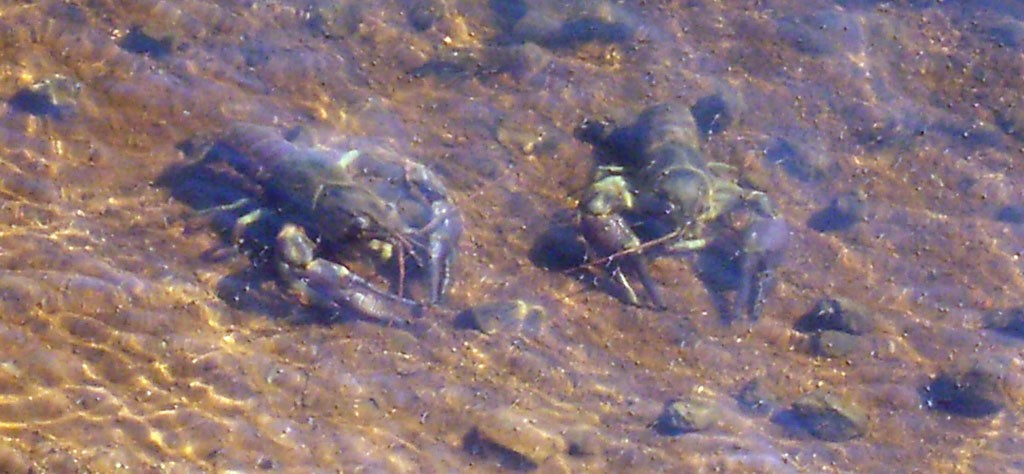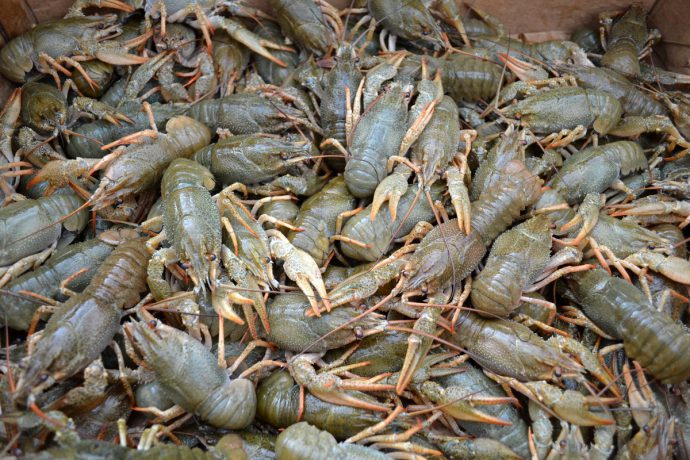Sections of the site
Editor's Choice:
- Business with China - where to start, how to find suppliers + TOP-15 goods from China and a list of trading platforms
- Where to invest 1000 dollars
- Three common misconceptions and six life tips
- How can maternity capital be used - what needs can be spent on maternity capital
- Caramel apples - a new idea for business
- Ready business plan for beginners
- Gypsum tiles for stone: 7 advantages of the material
- How to buy the best and interesting unusual goods from China for home, gifts and sale on Aliexpress in Russian?
- Business plan for opening a bath
- Where to spend maternity capital before the child is 3 years old
Advertising
| Crayfish size and weight |
|
Cancer (Astacus astacus), or common crayfish, belongs to the order of decapod crustaceans (Decapoda). The front pair of limbs is strongly developed and ends in pincers, with which the crayfish seizes prey and defends itself. The next four pairs of less developed limbs are for locomotion. There are five more pairs of short, atrophied limbs under the tail carapace. The anterior pair is developed in males into long tubular genitals. In females, the corresponding limbs are almost completely atrophied. The sex of young crayfish can be visually established only by the presence or absence of tubular genital organs. The sex of adult crayfish is easier to determine by comparing their claws and tails: males have larger claws, and the female has a wider tail than an individual of the opposite sex. The wide tail of the female protects the eggs while it, attached to the short limbs, develops under the tail. The genital opening in females is located at the base of the third pair of limbs, and in males - at the base of the fifth pair of limbs. Habitat and lifestyleCancers are more whimsical in relation to the environment than many people think. The water where they live must be fresh; crayfish cannot reproduce in salty or salty-fresh sea water. The oxygen content in the water is the same for crayfish as for salmonids. For the normal life of crayfish in the warm season, the water should contain oxygen in excess of 5 mg / l. Crayfish can live in both light and dark water, as long as it does not have too much acidity. The pH value of water ideal for the life of crayfish should be above 6.5. The growth of crayfish in waters depleted in lime slows down. Crayfish are very sensitive to water pollution. If the living conditions are favorable, then crayfish can live in a wide variety of fresh water bodies - lakes, rivers, oxbows and streams. However, it seems that the favorite habitat of crayfish is still rivers. In the habitats of crayfish, the bottom of the reservoir should be solid and free of silt. On the muddy bottom, as well as on rocky or sandy shores, as well as in shallow waters with a flat, clean bottom, crayfish are not found, since they cannot find shelter for themselves or dig it out. Crayfish love rocky bottoms where they can easily find shelter, or a bottom suitable for digging holes. Crayfish burrows are found in coastal pits or on the banks of the banks. Most often they are located on the border of a hard and soft bottom. The exit from the burrow, the corridor of which can be more than a meter long, is usually hidden under the trunk of a fallen tree, tree roots or stones. The crayfish hole is rather narrow, dug by the size of the inhabitant, which makes it easier for crayfish to organize protection from the attack of larger fellows. Cancer is difficult to pull out of the hole; it clings tenaciously with its limbs to its walls. That the burrow is inhabited is shown by fresh soil at the entrance. Cancer lives at a depth of 0.5 to 3.0 m. The best places to live are captured by large males, less suitable ones remain for weak males and females. Juveniles keep in shallow water near the very coastline, under stones, leaves and twigs. Cancer in its way of life is a hermit. Each individual has some kind of shelter that protects from congeners. In the daytime, the cancer is in a shelter, closing the entrance to it with claws. Sensing danger, he quickly backs away, going deeper into the hole. In search of food, the crayfish comes out at dusk, and in cloudy weather - already in the afternoon. Usually it moves in the water at night, stretching its claws forward and keeping its tail straight, but if frightened, it will quickly swim back with the help of strong blows of the tail. It is generally believed that cancer is held in one place. However, the tagged crayfish, after a few weeks, fall into the gear hundreds of meters from the places where they were tagged. Height
The growth rate of crayfish depends primarily on the temperature and composition of the water, the availability of food and the density of the crayfish habitat in the reservoir. The growth rates of crayfish in different water bodies are different. But even in one reservoir there is no year on year, much depends on the water temperature. In the first and second summer of life in males and females, the growth rate is the same, but at the end of the third summer, or the second year of life, males, on average, are already larger than females. In the conditions of southern Finland, crayfish reach 1.4-2.2 cm in length by the end of the first summer, 2.5-4.0 cm by the end of the second summer, and 4.5-6.0 cm by the end of the third summer. the size allowed for fishing (10 cm), males reach 6-7 years of age, females - at 1-8 years of age. In waters with a sufficient amount of food for crayfish and under other favorable conditions, crayfish can reach the size allowed for fishing two years earlier, but under unfavorable conditions - several years later. It is often asked to what size crayfish can grow. Fisheries adviser Brofeldt in 1911 noted that specimens 16-17 cm long came across in the town of Kangasala, although then such crayfish were caught less and less. Suomalainen reported that the 12.5-13 cm long crayfish caught in 1908 were medium-sized specimens. These testimonies seem like fairy tales to us - crayfish don't have to be that big. In 1951, Seura magazine was the organizer of the competition - who will catch the largest cancer in the summer. The winner was the participant who caught the crayfish 17.5 cm long, 28.3 cm to the tip of the claw, weighing 165 g. The crayfish had only one claw, which explains its relatively low weight. It can be considered a surprise that the female was a giant crayfish. In second place was the male, whose length was 16.5 cm, and to the tips of the claws - 29.9 cm. This specimen weighed 225 g. Other examples of caught crayfish with a length of 17.0-17.5 cm are known from the literature. It is interesting to note that, according to the Estonian scientist Järvekülgin, male crayfish over 16 cm long and weighing 150 g, and female crayfish over 12 cm long and weighing 80-85 g are an exceptional rarity. Obviously, the female caught in Finland in 1951 can be considered a giantess. And the age of the crayfish? How long do cancers live? There is still no sufficiently accurate method for determining the age of crayfish, similar to how the age of fish is determined. The lifespan of crayfish individuals is forced to determine by comparing age groups or groups of crayfish of the same length. Because of this, it is impossible to accurately determine the age of single large specimens. In the literature there is information about cancers reaching the age of 20 years.
Cancers grow as if in leaps and bounds - when the shell is replaced. Molting is an important moment in the life of crayfish, at this time a thorough renewal of their organs takes place. In addition to the chitinous cover, both the upper layer of the retina of the eyes and gills and the protective upper layer of the oral appendages and parts of the digestive organs are renewed. Before molting, the crayfish hides for several days in its burrow. But the molt itself takes place in an open place, and not in a burrow. Replacing the carapace takes only about 5-10 minutes. Then the defenseless cancer is clogged for a week or two, while the shell hardens, in the shelter. At this time, he does not eat, does not move and, naturally, does not fall into the tackle. Calcium salts are transferred from the blood to the new carapace and soak it. Before molting, they accumulate in two oval solid formations found in crayfish in the stomach. Cancer can sometimes be found when eaten. Molting occurs only during the warm season. In the first summer of life, the cancer sheds 4-7 times, depending on the growth conditions, in the second summer - 3-4 times, in the third summer - 3 times and in the fourth summer - 2 times. Adult males molt 1–2 times a season, and mature females usually molt once. Closer to the northern border of crayfish distribution, some females molt every second year. Moulting of males, as well as females that do not have eggs under their tails, occurs at the end of June; females carrying eggs - only when the larvae emerge from the eggs and separate from the mother. In southern Finland, such females usually change their shells in early July, and in northern Finland, their molt begins in August. If the beginning of summer is cold, molt may be several weeks late. In such cases, at the onset of the fishing season (from July 21), the shell may not yet harden, and the cancer will not fall into the tackle. Reproduction
Male crayfish reach sexual maturity about 6-7 centimeters, females 8 centimeters. Sometimes there are females of 7 centimeters in length, carrying eggs under the tail. Males in Finland reach sexual maturity at 3-4 years (which corresponds to 4-5-year seasons), and females at 4-6 years (which corresponds to 5-7-year seasons). Mating of crayfish occurs in autumn, in September-October. Crayfish do not gather, like fish, on spawning grounds, their fertilization takes place in their usual habitats. The male turns the female onto her back with large pincers and attaches the spermatophores at the female genital opening in the form of a white triangular spot. A few days later, or even weeks, the female, lying on her back, lays eggs. In Finland, the female usually lays from 50 to 150 eggs, and sometimes up to 400. The eggs are not separated from the female, but remain in the gelatinous mass secreted by her glands. Under the tail of the female, eggs develop until the beginning of the next summer. During the winter, the number of eggs is significantly reduced due to mechanical loss and fungal infection. In the southern part of Finland, the larvae hatch in the first half of July, in the northern part of the country in the second half of July, depending on the water temperature in early summer. When emerging from eggs, the larvae are already 9-11 mm long and are very similar to small crayfish. But their back is more convex and relatively wide, and the tail and limbs are less developed than in young crayfish. The larvae stay for about 10 days under the mother's tail, until they suck out the transparent reddish yolk to the end. After that, they separate from their mother and begin an independent life.
Cancer is an omnivore. It feeds on plants, benthic organisms, devours even congeners, especially those that molt or have just shed and are therefore defenseless. But the main food is still plant, or rather, in the first years of life, cancer feeds more on benthic organisms and gradually switches to plant food. The main food is the larvae of insects, especially mosquitoes, and snails. First-year-olds willingly eat plankton, water fleas, etc. Cancer does not kill or paralyze its prey, but, holding it with its claws, gnaws it, biting off piece by piece with sharp parts of its mouth. A young cancer can eat a mosquito larva several centimeters long for two minutes. There is an opinion that cancer, by eating eggs and fish, harms the fish industry. But this information is based more on assumptions than facts. At the beginning of this century T. Kh. Järvi pointed out that in those reservoirs where the crayfish were released, the number of fish did not decrease, and in the reservoirs in which the plague destroyed the crayfish, the number of fish did not increase. None of the 1,300 crayfish caught in the research from the two rivers ate fish, although there was a lot of it, and the most varied. It's not that cancer can catch fish. Its slow movements are deceiving, it is able to grab prey with its claws with lightning speed and accurately. An insignificant part of fish in the diet of crayfish is explained, apparently, by the fact that fish simply do not swim close to the habitats of crayfish. Cancer, of course, is able to eat in large quantities of sedentary, sick or injured fish and effectively cleans the bottom of the reservoir of dead fish.
Cancer has many enemies among fish and mammals, although it is well protected by a shell. Eel, burbot, perch and pike readily eat crayfish, especially during their molt. The eel, which can easily penetrate the burrow of crayfish, is the most dangerous enemy of large individuals. For young crustaceans living in coastal waters, the most dangerous predator is perch. Larvae and juvenile crayfish are also eaten by roach, bream and other fish that feed on benthic organisms. Among mammals, the most famous enemies of crayfish are muskrat and mink. At the feeding places of these animals, near the shores of water bodies, you can find quite a lot of their food waste - crustacean shells. And yet, most of all, it is not fish and mammals that kill crayfish, but the crayfish plague. Catching crayfish
It is known that crayfish were caught already in ancient times. Until the Middle Ages, they were used for medicinal purposes. It was advised to sprinkle the ashes of the crayfish burned alive on the wounds from the bites of a rabid dog, snake and scorpion. There are also boiled crayfish prescribed for medicinal purposes, for example, for exhaustion. From historical literature it is known that at the royal court of Sweden already in the 16th century. gave a decent assessment to the taste of crayfish. Naturally, the nobles in Finland began to imitate the royal nobility. The peasants caught and supplied crayfish to the nobles, but they themselves treated the "armored beast" with great distrust. The crayfish fishing season in Finland starts on July 21st and lasts until the end of October. Catches have been decreasing since the second half of September. Practically, crayfish catching is stopped a few weeks before the onset of the ban, since in late autumn the crayfish meat loses its taste, and the shell becomes harder and harder. Cancer catches at the beginning of the season depend primarily on the temperature of the water. If May and June are warm and the water temperature is high, then the molt of both males and females ends even before the onset of the fishing season. In this case, the catches are good from the very beginning. In cold summer, molting may be late, and crayfish begin to move after the shell has hardened only at the end of July. As a rule, in the south of Finland, crayfish are always better caught at the beginning of the season than in the north, where crayfish molt later. Fishing methods and tackleWith the expansion of fingering, other methods of catching crayfish remain in the background or are forgotten altogether. Still, crayfish can be caught in a variety of ways that are not so easy, but exciting for hobbyists. Catching with your hands
Catching crayfish with your hands is the most primitive and, apparently, the most ancient way. The catcher moves carefully in the water and looks under stones, tree trunks, lifts branches, under which crayfish hide in the daytime. Noticing the cancer, he tries to grab it with a quick movement until it hides in a shelter or runs away. Naturally, this fishing method is not suitable for those who are afraid of claws. The biggest catch happens in the dark, when crayfish emerging from their shelters can be caught by illuminating the bottom of the reservoir with a lantern. In the old days, a fire was made on the shore to lure crayfish. In such a simple way, on a rocky bottom near the coast, where there are many crayfish, you can catch hundreds of them. You can grab a crayfish with your hands only if the water depth is not more than 1.5 m. For catching crayfish in deeper waters, and in reservoirs with light water at a depth of even several meters, so-called crayfish mites were used in Finland. These wooden mites can easily catch and lift crayfish out of the water. Ticks can be from one to several meters in length. To prevent the mites from damaging the cancer, they can be made hollow.
A simpler device is a long stick, at the end of which a split is made, and it is expanded with a small stone or wooden stick. It is impossible to pull the crayfish out of the water with such a stick, it is only pressed to the bottom and then lifted by hand. Catching with ticks requires a lot of skill, since crayfish, as soon as they sense danger, run away very quickly. Due to their own sluggishness, the Finns did not widely use ticks as a fishing tool, and they did not become widespread. The unpopularity of this method of fishing,. Apparently, it is connected with the fact that in the dark waters of Finnish reservoirs it is difficult to notice crayfish, and if the reservoir is a little deeper than a very shallow one, then it is completely impossible to see it. This method of catching crayfish also includes underwater fishing. It requires special glasses and a breathing tube. Crayfish from burrows can be pulled out with gloved hands or collected from the bottom at night. When diving at night, you must have a flashlight, or your partner must illuminate the bottom from the shore or boat. Although the diver catches near the shore, various dangers always lie in wait for him. Therefore, it is recommended that a partner be on duty on the shore and watch the fishing progress. An example of catching with your hands underwater - VideoCrayfish anglingWith the considered methods of fishing, baits are not used at all. The catch when fishing without baits always depends on chance, and there is no guarantee that you will catch crayfish. With the use of lures, fishing becomes more effective. The bait attaches the crayfish to the tackle and keeps it in the fishing spots.
A fishing line is tied to a stick 1-2 m long, and a bait is tied to a fishing line. The sharpened end of the stick is stuck into the bottom of a lake or river near the shore or into a coastal slope. The bait is placed in the right place for the crayfish to be attached. A catcher can use several, even dozens of fishing rods at the same time. Their number depends primarily on the density of the crayfish habitat in the reservoir, the activity of their zhora and the supply of baits. According to the Swedish researcher S. Abrahamsson, the nozzle engages crayfish in stagnant water from an area of about 13 square meters. Therefore, it makes no sense to place gear more often than at a distance of 5 m from each other and no closer than 2.5 m from the coastline. Usually, fishing rods are stuck at a distance of 5-10 m from one another, more often in more catchy places, less often in less catchy places. During the evening and night, depending on the zhora, the fishing rods are checked several times, sometimes even 3-4 times per hour. The fishing area should not exceed 100-200 m in length, so that you can check the fishing rods in time, before the crayfish have time to eat the bait. If the catch decreases during the evening, you need to move to a new location. When checking the fishing rods, carefully pull the stick out of the bottom and raise the fishing rod so slowly and smoothly so that the crayfish clinging to the bait does not unhook, but rises with it closer to the surface of the water, where the prey is picked up from below with a net carefully lowered into the water. Angling can be very effective. Sometimes 10-12 crayfish can be pulled out at a time. The swinging end of the stick, to which the fishing line is tied, indicates that the cancer has attacked the bait, Zakidushka and zherlitsa - the same type of tackle with a fishing rod. In them, a bait is usually tied to a 1.5-meter length of fishing line, and a float is attached to the other end. A sinker is tied to the perch next to the bait. The so-called crustacean stick differs from a fishing rod in that a short piece of fishing line is tied to the stick or does not use the fishing line at all. In this case, the bait is attached directly to the lower end of the stick. The stick is stuck into the bottom at the fishing area so that the bait is free lying on the bottom. The technique of catching with a zakidushka, zerlitsa and a crustacean stick is the same as fishing with a fishing rod. They fish crayfish with all these tackles in the same way as fish. The angler keeps the rod in his hands all the time and, feeling that the crayfish has grabbed the bait, carefully pulls it together with the bait to the surface of the water, closer to the shore, and with the other hand substitutes the net under the crayfish. In this way, they catch, for example, in France - there, a ring is tied to the end of the fishing line to thread the bait into it. Rachevny
How and where to catch crayfish
For crayfish catches to be good, you need to know how and where to catch them. The mobility of crayfish depends on the illumination of the water. In dark waters, which poorly transmit light, the tackle can be set early in the evening, sometimes already at 15-16 o'clock. The richest catch in such waters is in the evening, and by midnight it decreases, as the activity of crayfish decreases. In clear waters, you should not start catching crayfish earlier than evening, the catch continues to grow until midnight and even after midnight. After darkness at night, a new zhor is noted, but it is weaker than the evening one. Many other factors also affect the activity of the movement of crayfish. In cloudy weather, fishing can be started earlier than in clear weather. The best catches of crayfish are on warm, dark nights as well as rainy weather. Catches are poorer on cold, foggy and light nights, as well as under the moon. Thunderstorm interferes with fishing. Traps are usually set at a depth of 1-3m, but if the vegetation eaten by crayfish and the bottom suitable for their habitat is in deeper places, you can try to fish at a depth of several meters. In light water, crayfish stay deeper than in dark water. It is best to catch them in reservoirs with a rocky or pebble bottom, at abandoned stone piers, bridges, under snags, on steep banks and under the slopes of the banks from the bottom, suitable for digging holes. At night, during fishing, crayfish are not measured or sorted, as in the dark it takes a long time and slows down the catch. Collect the crayfish in a bowl with low steep edges and a wide bottom so that they are not placed in a thick layer. There should be no water on the bottom of the dishes. It is very convenient to measure the length of crayfish with a measuring stick, in which there is a depression in the shape of the back of the crayfish. The stick is 10 cm long. Young crayfish less than 10 cm in size are taken and released back into the water. It is recommended to release them into the water away from the place of fishing, so that they do not get caught again and are not needlessly injured.
Crayfish caught most often have to be stored for some time before use. They are usually kept in cages. It must be borne in mind that in order to localize possible infectious diseases, crayfish in cages should be kept in those reservoirs from which they were caught. Best of all, low boxes made of boards, in the walls of which holes are drilled, or boxes with slots, have proven themselves as cages. Crayfish are well preserved in cages made of wooden planks or metal mesh. Keeping crayfish in cages should be as little time as possible, since they eat each other, especially helpless individuals. When storing crayfish for more than 1-2 days in cages, they need to be fed so that they are better preserved and less attacked one another. Fresh fish is the usual food. Crayfish can also be fed with nettles, alder leaves, potatoes, pea stalks, and other plant foods. It has been noticed that crayfish fight more often for fish than for plant food. In these fights, they lose their claws and receive other injuries. To avoid this, it is better to feed the crayfish with plant foods in the cages. Crayfish are usually transported without water, in spacious boxes. Wicker baskets, as well as wooden, cardboard and plastic boxes are especially practical, as long as they have enough air holes. Crayfish are placed in boxes about 15 cm high only in one row. At the bottom of the boxes, as well as on top of crayfish, it is recommended to lay a layer of wet moss, grass, nettles, aquatic plants, etc. In higher boxes, intermediate shelves are made of slats so that the layers of crayfish do not adhere tightly to each other. They can be transported intact and without intermediate partitions, shifting in layers of moist moss. You need to put crayfish in boxes and cover them with moss as quickly as possible, until they begin to move. If the crayfish begin to show activity, they will quickly cluster into heaps in the corners of the box. Care should be taken to prevent the crayfish from getting covered with water collected at the bottom of the box. When transporting crayfish in the summer heat, it is necessary to ensure that the temperature in the boxes does not rise too high. To do this, you need to cover the boxes from direct sunlight, put ice bags around the boxes, etc. In the heat, crayfish are best transported at night. To maintain the desired temperature inside, the outside can be upholstered with any dry material. The main activities for caring for crayfish in natural reservoirs are: It is the duty of every lover of crayfish catching to help localize the epidemic, prevent it from spreading widely, and follow the recommendations developed for these cases. Intensive crayfish fishing is one of the most effective methods for increasing the number of crayfish in a water body. Since crayfish reach sexual maturity already at a length of 7-8 cm, and the minimum size allowed for catching crayfish is 10 cm, mass catching of crayfish will not harm their livestock in the reservoir. On the contrary, when large and slow-growing individuals, which occupy the best habitats, are removed from the reservoir, the reproduction of crayfish accelerates. Females with eggs and crustaceans should be immediately released into the water. Individuals with a length of 8-9 cm that have reached sexual maturity are suitable for resettlement. Resettlement must be carried out at the latest in August, so that the crayfish have time to acclimatize in the new habitat before mating and the onset of winter. Crayfish Catching - Video
Crayfish bait Catching crayfish in winter for crayfish What to catch crayfish in crayfish Crayfish catching with crayfish How to catch crabs DIY rakolovka How to catch shrimp Fisherman's winter clothes Fisherman's winter clothes Fisherman's winter clothes Fisherman's winter clothes Fisherman's winter clothes Fisherman's winter clothes Opinions and comments1,138With usI like it 1,705SubscribersSubscribe Fisherman's winter clothes What should be the clothes for fishing in winterIce fishing is not only excitement and a great catch, but also frost, chilling to the bone, piercing chilling wind and huge snowdrifts. Therefore, high-quality and warm clothing is no less important attribute of winter fishing than well-oiled tackle. In recent years, technological progress has affected not only fishing equipment, but also equipment. Quilted jackets and raincoats were replaced by winter suits for fishing, made of the most modern materials. These clothes should be very warm and lightweight. Typically, a winter fishing suit consists of a jacket and semi-overalls or one-piece overalls. Since this suit is designed specifically for fishing, special requirements will be imposed on it. What should be a winter suit for fishing
Among other things, you should pay attention to gloves-mittens, a clutch and insulating shoe covers. These items, sometimes included with winter fishing suits, can help you stay warm in the coldest temperatures. When purchasing a winter suit for fishing, you should take into account that it is designed for a certain temperature range. And therefore, before the fishing itself, you need to carefully think over every detail of your wardrobe, because not only the size of the catch, but also your health will depend on this. Winter fishing for perch on a balancerFor many winter lurers, fishing for perch on a balancer is becoming very popular here. And special skill when fishing with this amazingly catchy artificial bait is not needed here, as novice anglers think. The good thing about using a balancer is that it is a noisy bait that attracts a predator well with powerful vibrations and very clearly and reliably provokes a striped hunter to attack. The tackle for catching large perch in winter on a balancer is as follows: lightweight and reliable winter fishing rod, silicone nod, monofilament line and balancer. For perch fishing it is necessary to use small balancers, it is better to choose their size from 3 to 5 cm. Nods can also be used from other materials, the main thing is that they are of the required length and very sensitive. As for the body length and shape of the balancer, then you need to constantly experiment and have several different baits in your arsenal. Natural colors, such as perch, work best for flowers. It is better to attach the balancer to the main line through the fastener so that the line does not fray. The technique of playing with a balancer is very simple - successive strokes of the rod, with small pauses, starting from touching the bottom to the upper level of the hole. Pauses between swings can be made both short and long. Indeed, very often the perch attacks the bait exactly at the moment of the pause. It is worth remembering that in order for fishing to be successful, perch must be looked for in various places and layers of the reservoir, catching all the horizons. You need to drill several holes, move continuously and constantly fish for new holes. In case of poor perch activity, you can feed the holes with bloodworms or chopped dung worms, which will attract a new flock of perch to the fishing site. Also, move on the ice very quietly so as not to frighten off the perch. The choice of the balancer for the perch is a very important point. Your winter catch may depend on this. In order for you to start catching perch from the very first fishing, we will tell you which balancer you should choose. And the number of bites of a perch can be influenced not only by the firm of the balancer and its size, but also by the color. More experienced anglers make balancers with their own hands. Balance bar size and weightThe size and weight of the balancer per perch is undoubtedly one of the main factors in choosing a bait. Everything is simple here, the length of the balancer per perch is optimal - 3-4 centimeters, weight - 4-6 grams. Smaller balancers will pick up small pieces, while larger ones are more suitable for pike fishing. Balancer colorSome anglers argue that the color of the balancer does not play any role and the amount of catch does not change from this factor. And here they are completely wrong. The color of the balancer may not affect the number of bites of the perch only in two cases:
If the state of the perch is normal, so to speak average, then the color of the balancer plays just a very important role. Professionals who have vast experience in winter fishing for perch on balancers agree that the best color of the balancer for perch is the color of the bleak or the minke itself. Examples of colors of balancers for perch, which, as a result of the experiment, showed the best result in terms of catch:
Determining the best color from the above is very difficult. The fact is that all these colors always show incredible results. The same wobblers, different colors work in different ways, have been proven many times, so if someone tells you that the color of the balancer does not matter, you can safely argue with him and conduct an experiment with the participation of the same balancers of different colors. Balancer for perch: TOP-3 according to the reviews of anglers1. Lucky John Classic. A very catchy bait for catching perch. It often becomes the main fishing tool for catching large perch. Has won a high level of trust and a large number of positive reviews from anglers. The colors 13H and 15H are recommended. 2. Rapala Jigging Rap. Another balancer that will not allow you to remain without a catch. Working in all colors, but the best colors are SSD, FP, BYR, P and GT. A huge level of trust among anglers and high marks. A 5 cm long wobbler always catches large perch with great success. 3. Nils Master - Jigger. The third balancer in a series of the most catchy for perch. The best colors are silver-blue and green-yellow-red. Many anglers claim that this is the most catchy wobbler in their practice, but so far it is in third place. Some replace the extended tee with a regular tee. Video - how to choose a balancer for a perch The technique of catching perch on a balancerA very important point when fishing for perch on a balancer is the technique of playing with a bait. The success of the entire trip to the ice depends on your ability to correctly apply the bait and correctly play it back. How to correctly make the movements of the balancer in order to attract the perch as much as possible and at what depth to fish it is necessary to figure it out first. If you do everything in the same way as it is written in this article, then you will learn how to catch perch with balance weights very quickly and in the process of catching yourself you will understand all the logic of the information obtained from this article. Pause is the basis of the technique In fact, it is quite simple to learn how to make the correct movements with the rod so that the balancer plays as efficiently as possible, and you can provide a fairly high-quality game to the perch already on the first fishing trip. Of course, you will have to hone your skills with each outing on the ice, especially since in each reservoir you have to guess the preferences of the local striped predator. Before opening the veil of secrecy over what movements you need to make in order to achieve the maximum effect from catching perch on a balancer, I ask you to learn the basic rule - the most important thing in the game with bait, when fishing for perch or any other predator in winter, is a pause. It is during the pauses that 90% of the predator bites occur, the perch is no exception. The pause is the basis of any balance game. The rest of the movements are designed to attract the perch, make them believe that there is a real fry in front of him, which is also an easy prey, and then a pause is made in the game and the perch goes on the attack. The perch always attacks the hook, mainly the bottom tee, so even if the size of the balancer is large, small perches will still be found in your catches, although the balancer is undoubtedly the most effective bait for catching large perch from the ice. Now, the most important thing is the technique of catching perch on a balance bar. If this is not the first time you have taken a winter fishing rod in your hands, then you should know that before you start fishing, the bait sinks to the bottom anyway, and even if you are going to winter fishing for the first time, now you know it. This is done so that we have a starting point. It is necessary to start playing the bait 15-20 cm from the bottom, and you can measure this distance only by lowering the bait to the bottom. After the bait is at the bottom, we raise it to the already agreed distance above the bottom and begin to make short jerks with the balancer, periodically, after 3-4 short jerks, make a longer jerk of 30 centimeters. During such jerks, the balancer rises sharply and goes into side. Such movements can interest the perch and provoke an attack. In between, both after short and after long jerks, be sure to pause. During the pauses, we are waiting for a bite. We continue such movements for about 3 minutes, if there are no bites, we begin smoothly, making short oscillatory movements, to raise the bait higher from the bottom. Usually, if the perch is in the line of sight of the bait, it begins to act more actively precisely on the ascent of the balance bar. Then we sharply lower the rod tip to its original position, pause and repeat such maneuvers several more times. No bites - go to the next hole, which is best drilled at a distance of no more than 5-7 meters. This distance is optimal, since the perch usually gather in schools and form a living circle with a radius of about 3 meters. Drilling holes five to seven meters from each other, you will not warm up with it. Get ready for the fact that you will have to drill a large number of holes and travel a considerable distance on the ice, as catching a predator always involves a long search. 5 ways to play when fishing with a balancerPerch loves the game of bait very much, the more varied and interesting it is, the more likely it becomes to bite. Sometimes it happens that the perch takes the bait best when it makes completely irregular and chaotic movements. Let's take a look at five of the most effective methods of playing with which you can activate perch biting. 1. This method is optimal when there are no perch bites at all and it is necessary to find a way to awaken appetite in this predator. The balancer is lowered to the bottom, then it is necessary, by lifting the rod end up, smoothly, with slight acceleration to raise it to the distance of an outstretched arm. This is approximately one meter. Then, without a sharp descent, smoothly, the balance bar again lowers to the bottom. The lowering is accompanied by light swaying, which are performed by the movement of the hand, thus the abdominal tee is set in motion, which is the main target for the perch. Each time, at the very top of the climb, it is necessary to make a sharp short movement, as if shaking off the algae from the balancer. Repeat these movements 5-10 times in each hole. 2. Another good way. After touching the balance bar to the bottom, make a sharp jerk 30 cm upwards, after which the rod tip immediately returns to its original position and a pause is made for 3-5 seconds. Repeat this game 5-10 times. If there are no bites, try raising the balance bar a few tens of centimeters higher during the jerk. 3. The third method is that it is necessary to swing up without lowering, with pauses between jerks up to 5 seconds. The rod rises 15-20 cm after each dash. Raise the bait in this way until it is at the very ice. 4. Often, perch, especially in spring, hunts in the uppermost layer for the perch, therefore, the upper horizon should also be fished periodically. Often, the perch does not react to the play of the balancer itself, but to the play of the lower tee. The play of the tee is achieved by swaying and sharp short jerks of the balance bar. The simultaneous play of the balancer and the tee works very well. You make a jerk upward and at the same time frequent oscillations with your hand. The same can be done when lowering the balancer. 5. Double lifting without dumping. Tear off the balancer 40 cm from the bottom and pause. After the balance bar has completely stopped, count down 5 seconds and make another jerk 40 cm up. After that, playing with a tee, return the bait again to the bottom and start the classic balancer game - toss and lower. Balancer Rod SpecificationsThe tackle for catching perch should be good. Buying cheap tackle you infringe on yourself in comfort and in the quality of fishing, so it is better to spend money and catch with pleasure. When fishing for perch, a bite of a larger predator, such as a walleye or a pike, often occurs. And then the problems begin - the coil spun, the handle fell off, the screw fell out and other troubles. These are not fantasies at all - they are experiences. In addition, even playing a balancer with such a fishing rod will be worse. A good winter fishing rod for fishing perch on a balancer, in addition to being of high quality, should also have a fairly stiff rod so that the balancer play does not suffer. A soft rod impairs the play of the lure and makes it less attractive. A high-quality fishing rod also has a more sensitive nod, along which bites are clearly visible, and a reliable reel that will withstand a bite of a pike or pike perch without any problems. Why is the balancer better? Fishing for perch in winter on a balancer is more effective, because this bait is as much like a perch as a live fish. But this is not the main reason for its catchability. The perch resembles a small kitten. He loves when the bait rushes back and forth in front of his nose. The balancer is exactly the bait that will allow the perch to play a game that will please the perch, and if it is correctly executed, the catch can significantly exceed the efficiency of fishing with other baits. |
| Read: |
|---|
Popular:
Power and energy measurement
|
New
- Where to spend maternity capital before the child is 3 years old
- What business can you do at home
- How to open a sauna (bathhouse): business plan and recommendations
- Private bath and sauna as a business idea
- Natural stone business
- Fusing glass at home
- Power and energy measurement
- How to get promoted to a novice beauty master
- Breeding of laying hens for eggs: business plan and profitability
- Creative business ideas that make a profit

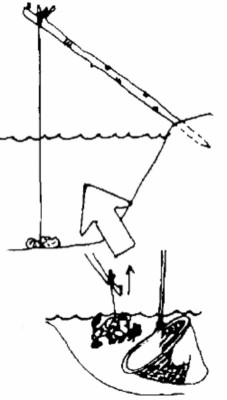
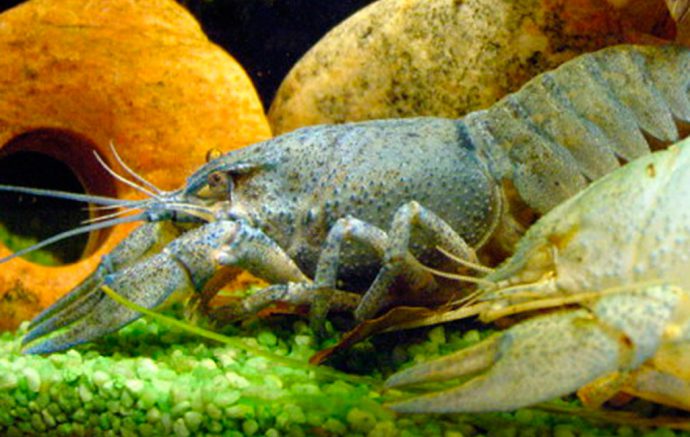
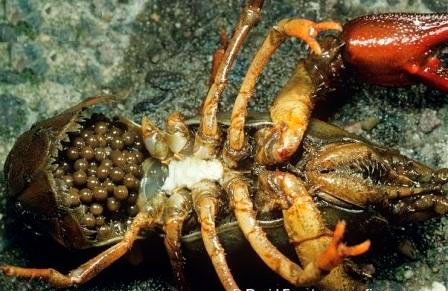
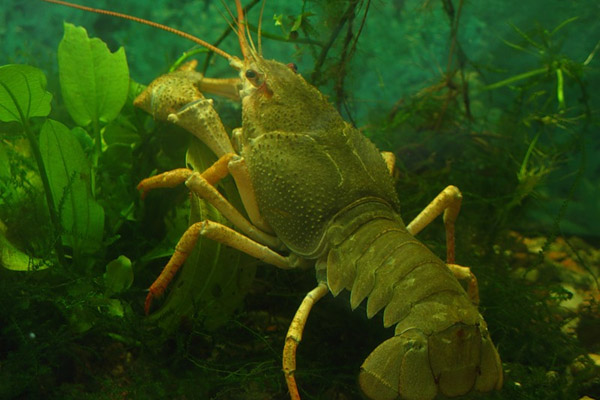
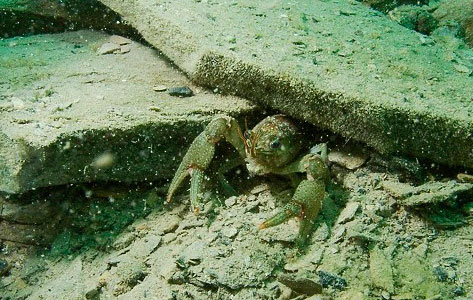
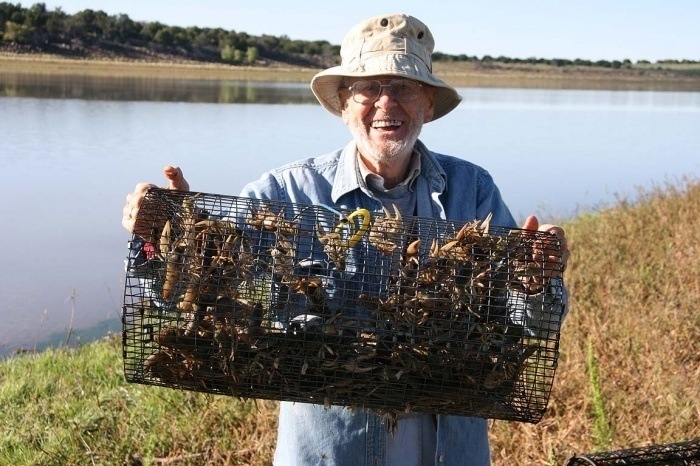
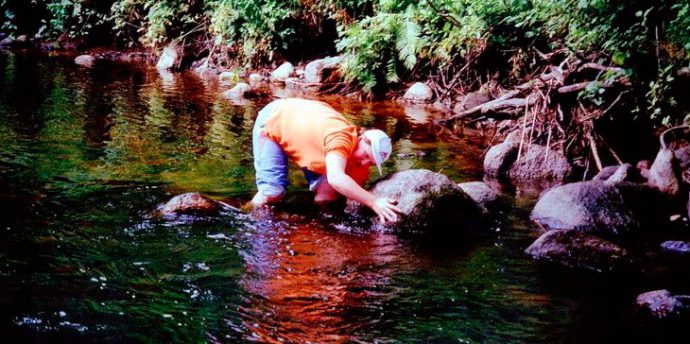

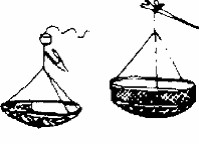 Now they began to use widely. Rachel is a cylindrical mesh stretched over a round metal hoop. Hoops are currently made from electroplated wire. Previously, they were made from twigs of willow or bird cherry, and a stone, piece of iron or a sandbag was tied up in the center of the mesh for a brace. The diameter of the hoop is usually 50 cm. Three or four thin cords of the same length are tied to the hoop at an equal distance in order to avoid distortion of the ryecha, and they are connected with a common knot, into the loop of which a more durable cord is threaded to lower and raise the tackle. If caught from the shore, the cord is attached to the pole. The bait is tied to a net, to a cord stretched along the diameter of the hoop or a thin stick, also attached to the hoop, and the trap is lowered to the bottom. The cord for pulling out the rache is tied to a buoy or a pole stuck into the bank slope. Catching fish is based on the fact that a crayfish that has seized a bait cannot get out of the trap when it is lifted out of the water. You should not hesitate to raise the farm. At the same time, you can fish with several crustaceans, placed at a distance of 5-10 m from each other.
Now they began to use widely. Rachel is a cylindrical mesh stretched over a round metal hoop. Hoops are currently made from electroplated wire. Previously, they were made from twigs of willow or bird cherry, and a stone, piece of iron or a sandbag was tied up in the center of the mesh for a brace. The diameter of the hoop is usually 50 cm. Three or four thin cords of the same length are tied to the hoop at an equal distance in order to avoid distortion of the ryecha, and they are connected with a common knot, into the loop of which a more durable cord is threaded to lower and raise the tackle. If caught from the shore, the cord is attached to the pole. The bait is tied to a net, to a cord stretched along the diameter of the hoop or a thin stick, also attached to the hoop, and the trap is lowered to the bottom. The cord for pulling out the rache is tied to a buoy or a pole stuck into the bank slope. Catching fish is based on the fact that a crayfish that has seized a bait cannot get out of the trap when it is lifted out of the water. You should not hesitate to raise the farm. At the same time, you can fish with several crustaceans, placed at a distance of 5-10 m from each other.